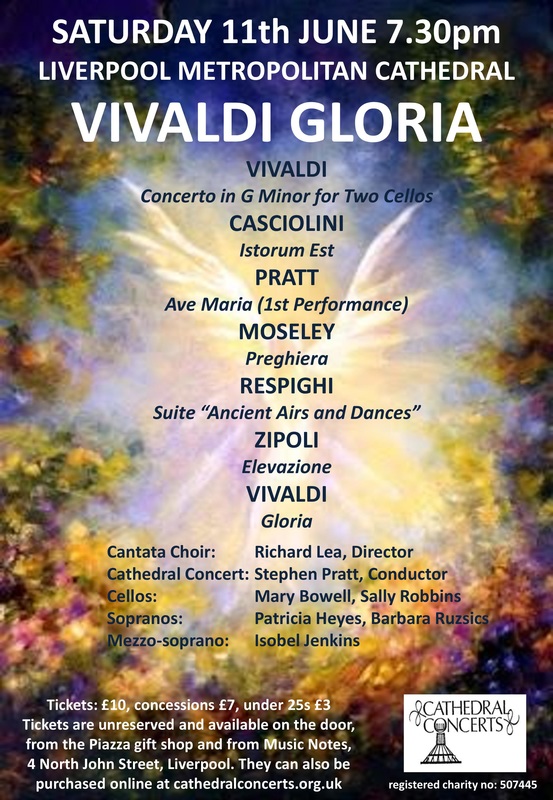

The “Quoniam tu solus sanctus” recalls the work’s opening section, before the complex double fugue of the “Cum Sancto Spiritu” brings the Gloria to a sparkling conclusion.Venetian liturgical music of the early 18th century tended to be indistinguishable from opera except that the texts were sacred rather than theatrical, allowing congregations to hear the same kinds of displays of flamboyant virtuosity they could expect in the opera house (and often with the same singers).

After the short, somber “Qui tollis peccata mundi,” the contralto is once again highlighted in the “Qui sedes ad dexteram Patris.” Soprano and violin duet in the slow “Domine Deus, Rex coelestis.” The joyous “Domine Fili unigente,” with its four-part choral harmonies, is followed by the slow “Domine Deus, Agnus Dei,” in which a contralto soloist joins the chorus. Two sopranos are featured in the lively, passionate “Laudamus te.” While the opening of “Gratias agimus te” is stately and homophonic in texture, when the chorus enters in the “Propter magnam gloriam tuam” the tempo speeds and the texture becomes more contrapuntal. The Gloria’s joyous opening “Gloria in excelsis Deo,” featuring octave leaps and obbligato trumpet and oboe, is followed by a more meditative “Et in terra pax,” with its canonic imitation in the chorus, chromatic harmonies, and throbbing string figures that call to mind Vivaldi’s concertos. But that wasn’t the case in Vivaldi’s time: no men, aside from priests like Vivaldi, were allowed at the Ospedale, so all performers (even the choir’s tenors and basses) would have been female. Typical modern performances of the Gloria include both male and female voices in the chorus. It was only rediscovered in the late 1920s and received its first modern performance in 1939. As was the case with so much of Vivaldi’s music, the Gloria was long unknown even to scholars. Sometime during this period he composed the Gloria in D major. But around 1713 and for the next six years – as the Ospedale’s choir master recovered from a serious illness – Vivaldi’s role expanded to include the writing of sacred works. Most of Vivaldi’s responsibilities at the Ospedale della Pietà involved teaching and the composition of instrumental music. In his later years Vivaldi fell on hard times, and on his death he was buried (as was Mozart five decades later) in a pauper’s grave in Vienna.

Meanwhile his concertos and other instrumental works were being published to great acclaim, attracting the admiring attention of famous musicians such as Johann Sebastian Bach.

He decided to pursue musical rather than ecclesiastical duties, and became a teacher at the Ospedale della Pietà, an orphanage and school for girls famous for its excellent choir and orchestra, where he worked in several capacities over the ensuing three-plus decades. Ordained as a priest in 1703, the redheaded Vivaldi came to be known as “il prete rosso” (“the red priest”). His operas and religious works also brought him fame during his lifetime. Colorful and tuneful works like The Four Seasons are among the most popular in all of classical music. Antonio Vivaldi is remembered as one of the fathers of instrumental music and the master of the concerto for soloist(s) and orchestra – of which he wrote over 550, including some 240 for the violin.


 0 kommentar(er)
0 kommentar(er)
